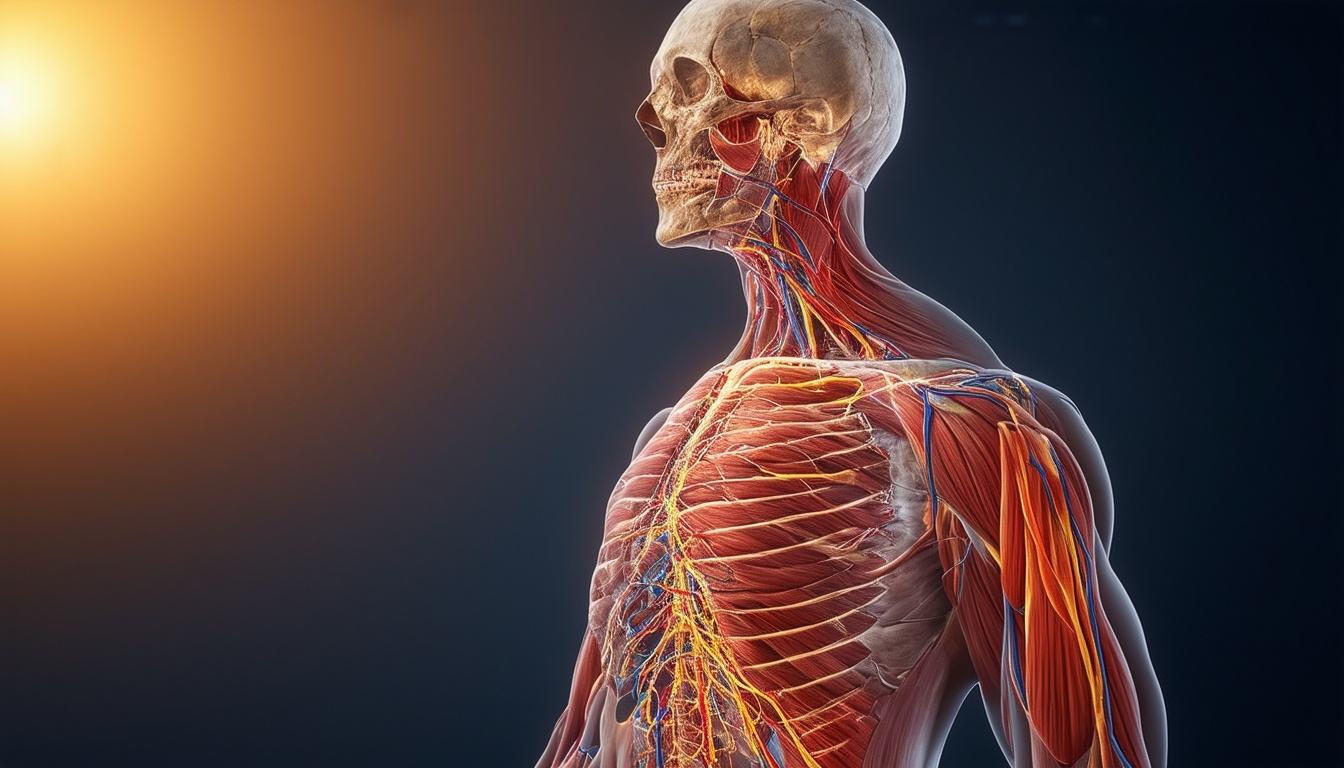Deep fascia, a crucial component of the musculoskeletal system, plays a significant role in movement, stability, and overall musculoskeletal health. This article delves into the various subtypes of deep fascia, their anatomical differences, functions, and relevance to medical and therapeutic practices. With over twenty years of experience in medical writing, I aim to provide actionable insights for physical therapists and medical professionals on how understanding these subtypes can aid in diagnosing and treating musculoskeletal disorders.
Structural Composition of Deep Fascia
Deep fascia is a dense, fibrous connective tissue that envelops muscles, bones, nerves, and blood vessels. It primarily comprises collagen fibres, which provide strength and flexibility, and elastin fibres, which allow for elasticity. The structural composition of deep fascia varies depending on its location and function within the body, leading to the formation of distinct subtypes.
Subtypes of Deep Fascia
1. Aponeurotic Fascia
Aponeurotic fascia is a sheet-like, fibrous tissue that covers and separates muscles, facilitating muscular force transmission. It is found in areas such as the abdomen, where the rectus abdominis muscle is enveloped by the rectus sheath. The aponeurotic fascia provides structural support and aids in the distribution of tension across the muscle groups.
2. Epimysial Fascia
Epimysial fascia surrounds individual muscles, helping to maintain their shape and integrity. This subtype of deep fascia is crucial for muscle contraction and relaxation, providing a stable environment for muscle fibres to work efficiently. For instance, the epimysial fascia around the biceps brachii muscle ensures that the fibres remain aligned and function optimally during arm movements.
3. Perimysial Fascia
Perimysial fascia encases muscle fascicles, which are bundles of muscle fibres. It facilitates the passage of blood vessels and nerves to the muscle tissue, ensuring adequate nutrient and oxygen supply. The perimysial fascia also plays a vital role in coordinating and synchronising muscle contractions, particularly in large muscle groups such as the quadriceps.
4. Endomysial Fascia
Endomysial fascia is the innermost layer of deep fascia surrounding individual muscle fibers. It provides structural support at the microscopic level, ensuring that muscle fibres remain intact and function correctly. The endomysial fascia is essential for maintaining muscle fibre alignment and preventing damage during muscle contraction and relaxation cycles.
Role of Deep Fascia in Musculoskeletal Health
Deep fascia is integral to musculoskeletal health, as it provides structural support, facilitates movement, and aids in the distribution of forces across the body. The different subtypes of deep fascia work together to ensure that muscles, bones, and joints function harmoniously. Understanding the role of deep fascia in musculoskeletal health can help medical professionals diagnose and treat various musculoskeletal disorders more effectively.
Influence of Deep Fascia Subtypes on Movement and Stability
The various subtypes of deep fascia influence movement and stability in different ways. For example, the aponeurotic fascia distributes tension across muscle groups, enhancing coordination and balance. The epimysial fascia ensures that individual muscles maintain their shape and function optimally, while the perimysial fascia facilitates the passage of blood vessels and nerves to the muscle tissue. The endomysial fascia provides structural support at the microscopic level, ensuring that muscle fibres remain intact during contractions.
Practical Applications for Physical Therapists and Medical Professionals
Understanding the different subtypes of deep fascia can aid physical therapists and medical professionals in diagnosing and treat musculoskeletal disorders. By recognizing the specific fascia involved in a patient’s condition, practitioners can develop targeted treatment plans that address the root cause of the disorder.
Case Study: Treating Chronic Lower Back Pain
A patient presents with chronic lower back pain, which has not responded to conventional treatments. Upon examination, the physical therapist identifies restrictions in the aponeurotic fascia of the lumbar region. The therapist can alleviate tension in the fascia by employing techniques such as myofascial release and targeted stretching exercises, resulting in significant pain relief for the patient.
Research and Data Supporting Fascia-Based Treatments
Recent research has highlighted the importance of deep fascia in musculoskeletal health and its potential as a target for therapeutic interventions. Studies have shown that fascia-based treatments can improve flexibility, reduce pain, and enhance overall function in patients with musculoskeletal disorders. For example, a study published in the Journal of Bodywork and Movement Therapies found that myofascial release techniques significantly improved the range of motion and reduced pain in patients with chronic neck pain.
Step-by-Step Process for Identifying and Working with Deep Fascia Subtypes
1. Conduct a thorough patient assessment, including a detailed history and physical examination.
2. Identify fascial restriction or dysfunction areas using palpation and movement assessments.
3. Determine the specific subtype of deep fascia involved based on the anatomical location and characteristics of the restriction.
4. Develop a targeted treatment plan that addresses the identified fascial dysfunction, incorporating techniques such as myofascial release, stretching, and strengthening exercises.
5. Monitor the patient’s progress and adjust the treatment plan to ensure optimal outcomes.
Deep fascia is a complex and vital component of the musculoskeletal system, with various subtypes playing distinct roles in movement, stability, and overall health. By understanding these subtypes’ anatomical differences and functions, medical professionals can develop more effective treatment plans for patients with musculoskeletal disorders. Through targeted fascia-based interventions, practitioners can enhance patient outcomes and contribute to improved musculoskeletal health.
Read More: Tried And Tested Methods That May Help You Fall Asleep Faster
🟢Wish you all the BEST 🙏🏻💜
🔴You can use the CAPTION to have a subtitle for the LANGUAGE you want…
🔵You can Donate to Me at Patreon
https://www.patreon.com/MedicalScribe
🟠The lecture Summary (PDF) uploaded on our Telegram channel in the link below…
https://t.me/Medical_Scribe
#Deep_Fascia
#Fascia
#Anatomy
▶️Video Topics:
00:00 Welcome & Topic
00:14 In the Previous Video…
00:45 The Deep Fascia
00:55 Deep Fascia Forms
01:16 The Intermuscular Septa
02:13 The Investing Fascia
02:42 The Subserous Fascia
03:38 The Retinaculum
04:19 Deep Fascia Subtypes
04:33 The Aponeurotic Fascia
04:57 The Epimysial Fascia
05:26 The End
💢For any issue or note, please contact me on :
Facebook: https://www.facebook.com/MedicalScrib



